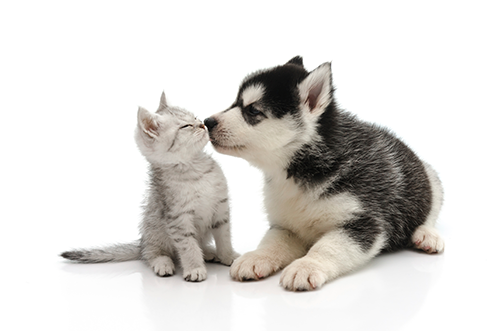Yes this is definitely an important hill to die on – the freedom to call women you don’t like “evil little cunt.” Our ability to reason and argue and discuss will wither and die without that freedom! Freedom freedom FREEDOM.
The post has been removed
Nov 30th, 2019 5:34 pm | By Ophelia BensonGood. It never should have been posted in the first place, but good that it’s been removed.
The post about me has been removed from @sciam for not meeting editorial standards. Thank you everyone for your support. Half truths, obfuscations, and lies help no person have agency over their body.
Note where the article used to be:
Editor’s note. The post that originally appeared here has been removed because we’ve determined that it doesn’t meet our editorial standards.
Jen Gunter a couple of hours later:
Removing this piece was important not just for me, but for health care. Naturopaths, anti-vaccine doctors, and people who claim they can “balance hormones” with food etc were celebrating my “take down” in @sciam seeing it as proof that they are right.
The acting editor in chief apologized to me by phone this morning and I have accepted his apology.
And so let’s move on to leftovers, puppy and kitten videos, shoes, coffee, wine and, of course, science.

Keep an eye out for Summer
Nov 30th, 2019 12:06 pm | By Ophelia BensonTransitional Housing Unit Resident on Escape Status
The New Hampshire Department of Corrections announces that a minimum-security resident of the North End Transitional Housing Unit in Concord failed to return home as scheduled on Wednesday, November 27.
Shaun Cook, 41, was placed on “escape” status just after 6 p.m. Wednesday night.
Cook is described as a white transgender female, 5’8”, 179 pounds with brown hair and
brown eyes.She has a scar on her chin and left cheek. Cook prefers female pronouns and
will often go by the first name, Summer, however, that is not her legal name.Cook has been imprisoned for several crimes throughout the years. Most recently, she is
serving time for a reckless conduct charge in 2014.
She often nagged
Nov 30th, 2019 11:07 am | By Ophelia BensonNot “murdered woman’s body found in freezer” but “woman whose body was found in a freezer was a bitch.”
Women are blamed for their own murders.
Common-sense dancing
Nov 30th, 2019 10:48 am | By Ophelia BensonHoward Jacobson remembers Clive James:
Clive James never failed to get a joke. Or to go on to make a better one. This wasn’t because he was overly competitive: rather, like Dr Johnson, whom he often quoted, he believed that conversation obliged us to keep the ball in the air. People lacking the grace that is a sense of humour also lacked common sense, he once told Martin Amis. “A sense of humour,” he went on, “is nothing but common-sense dancing.”
…
His practice as a critic, which was to abolish distinctions between high and low (but not between good and bad) was exemplary. The catholicism of his interests made his television columns for the Observer not only the most enjoyable but also the most discussed critical writing of the time, and it diminished his capacity to tackle the tough stuff (as witness the brilliant erudition of Cultural Amnesia) not a jot.
I found a copy of Cultural Amnesia in a Little Free Library a few weeks ago, not having heard of it but having a high opinion of Clive James. It sits on the stack waiting for me.
A champion for underdogs everywhere
Nov 30th, 2019 10:14 am | By Ophelia BensonIn an extra turn of the screw, the first named victim of the London Bridge murders was working on prisoner rehabilitation.
The first victim of the London Bridge attack has been named as Jack Merritt, a 25-year-old who worked for a programme aimed at improving prisoner rehabilitation.
Merritt’s death was confirmed by his father, David, who described him as a “champion for underdogs everywhere”.
Merritt worked as the course coordinator for Learning Together, a programme run by the University of Cambridge’s institute of criminology which had been running a course at Fishmongers’ Hall next to London Bridge on Friday.
Two people were killed and three were injured when 28-year-old Usman Khan launched a knife attack. Khan was arrested in December 2010 and released on licence in December 2018, wearing an electronic tag.
David Merritt posted on Twitter on Saturday: “My son, Jack, who was killed in this attack, would not wish his death to be used as the pretext for more draconian sentences or for detaining people unnecessarily.”
His words came as Boris Johnson, said the system of automatic release from prison was flawed.
Merritt said: “Cambridge has lost a proud son and a champion for underdogs everywhere, but especially those dealt a losing hand by life, who ended up in the prison system.”
A Facebook friend of mine taught him at Manchester before he went to Cambridge. He describes Jack Merritt in similar terms.
Her contribution
Nov 29th, 2019 4:28 pm | By Ophelia Benson
Jennifer Block explained the other day why she wrote that hit piece about Jen Gunter at the Scientific American blog:
I’ve been mulling this one for a while, about a troubling authoritarian streak in one prominent OB/GYN in particular. Then she went after Our Bodies Ourselves, as well as the fantastic Cosmopolitan Magazine piece on LEEPs, and Jennifer Lang wrote an open letter. So here’s my contribution.
There is no “troubling authoritarian streak.” It’s not “authoritarian” to say bullshit is bullshit; the reality is it helps people resist being conned and fleeced by people who sell quack “remedies” for big bucks. Gwyneth Paltrow is not being a friend to the downtrodden by peddling jade eggs and herbal miracle drinks. And as for Jennifer Lang’s open letter – Gunter points out that Lang is on the board of an anti-vaccine group.
Jennifer Block posted an hour ago to complain of being “trolled” on Twitter. What I’ve seen has been not trolling but reasoned criticism.
Thankfully I have a lot of support (and this Daily Beast piece calls my piece “the longest and most in-depth critique of Gunter’s work, drawing on the history of groups like Our Bodies Ourselves to explain how women taking control of their own health—and occasionally rebuffing their doctors—can be a feminist act.”) But damn, this is my first experience being trolled on Twitter. Wow what a cesspool. Thanks in advance for any supportive tweets/replies, but what a bad place for any meaningful discourse.
Meaningful discourse about the value of jade eggs and vaginal steaming, and the wickedness of saying they’re both useless and dangerous?
It’s all in the hips
Nov 29th, 2019 3:45 pm | By Ophelia Benson
Hmm.
“Author David Thomas still lives as a man, but has begun the male-to-female transition that will eventually result in becoming a woman.”
It won’t you know. It can’t. It doesn’t. It won’t. A man can’t “become” a woman. You can call it the male-to-female transition all you want, but it still won’t result in becoming a woman. Not even eventually. Not ever. This isn’t because we’re too mean to open the door of the club house, it’s because that’s not how it works.
But hey, I’m sure if he “learns to stand and walk like a woman” no one will ever suspect that he’s a man, because having a special dainty but seductive way of standing and walking is just that crucial to the whole thing.
Just stick it back in the right way
Nov 29th, 2019 12:57 pm | By Ophelia BensonAn Ohio state representative introduced a new bill last month, which aims to prohibit insurance coverage of abortions that occur where the mother’s life is not “endangered if the fetus were carried to term.” The bill includes exceptions, including one for a procedure that does not exist.
GOP Rep. John Becker introduced House Bill 182, which allows for two situations where insurers could offer coverage for abortion services. One is a “procedure, in an emergency situation, that is medically necessary to save the pregnant woman’s life.”
The other, the bill says, is a procedure for an ectopic pregnancy, “that is intended to reimplant the fertilized ovum into the pregnant woman’s uterus.”
Which can’t be done.
“An ectopic pregnancy cannot move or be moved to the uterus, so it always requires treatment,” according to the American College of Obstetricians and Gynecologists.
…
Ohio is no stranger to anti-abortion legislation. In April, Republican Gov. Mike DeWine signed the state’s “heartbeat” bill, an abortion ban that would prohibit the procedure about five to six weeks into a pregnancy, before most women know that they’re pregnant. The law is slated to go into effect on July 10.
This is some of that cis privilege we hear so much about, isn’t it.
Her stern, clear warnings
Nov 29th, 2019 12:18 pm | By Ophelia BensonNaomi Wolf is an interesting case study. Here I was thinking she had learned from the drastic mistake she made in her book and the fact that it was pointed out to her in a BBC interview. But just three days ago she tweeted…
This clip shows @BBC editing of audience laughter at Boris Johnson. My own @BBC
interview was edited to cut my stern, clear warnings to host that he was mistaken to state as a fact that men executed for sodomy in 19th c were mostly molesters, rapists.
Was that before the host pointed out her mistakes, or after?
It’s all the stranger that she’s so boastful of her stern, clear warnings when it’s only been a month since the news that her book is so full of mistakes that the US publisher canceled it.
The US edition of Oxford-educated author Naomi Wolf’s new book Outrages is being pulped after a number of major errors were discovered.
Outrages: Sex, Censorship, and the Criminalisation of Love is based on a PhD thesis that Wolf wrote in 2015, in which she claimed to have found examples of “several dozen executions” of men convicted of sodomy in Britain.
But, oops, she hadn’t found that at all, she had simply misunderstood the meaning of the phrase “death recorded” in the records.
Wolf came upon the phrase “Death recorded” in Old Bailey records, and cited one case of Thomas Silver, “aged 14”, who was “actually executed for committing sodomy” in 1859.
“The boy was indicted for an unnatural offence. GUILTY – Death recorded,” she wrote, inferring that an execution took place.
However, in an embarrassing interview with BBC radio host Matthew Sweet – himself an author – which took place in May, it was pointed out that Wolf had, perhaps understandably misinterpreted the term “Death recorded” to mean executed, when in fact it means the opposite: that the judge abstained from pronouncing the death sentence and the prisoner was pardoned.
But now she’s back, and not just back but bragging on Twitter about how she told that very same Matthew Sweet what’s what in that very interview?
Matthew Sweet is not impressed.
Oh dear. Here we go again. With the usual apologies. No such statement was made, as we were discussing post-1835 executions for sodomy in England. Contrary to the emphatic argument of @Outragesbook, no such executions occurred.
Here we go again after her US publisher recalled the book from shops and pulped it. What is she smoking?!
Sweet suggests she make an official complaint:
If Dr Wolf has a genuine complaint to make about editorial standards on @BBCFreeThinking, she – or perhaps her own editors at @ViragoBooks – could make it directly to the programme, and if that fails to satisfy, to take it up with @Ofcom.
As ever, I look forward to the corrected edition of @Outragesbook. And the revised version of her @UniofOxford DPhil. I will be interested to see if Dr Wolf has found any evidence that the Victorian cases upon which she builds her argument involved consensual sex.
Is Naomi Wolf Trump’s cousin or something?
Another bridge
Nov 29th, 2019 11:05 am | By Ophelia BensonTwo members of the public have died after a stabbing attack at London Bridge, in which police also shot dead the suspect.
The Met Police has declared the attack a terrorist incident.
The suspect, who died at the scene, was believed to have been wearing a hoax explosive device, police said.
Videos on social media appear to show passers-by holding down a man. An officer arrives, seems to indicate to the group to move, and fires a shot.
Because of the apparent explosive device, I guess.
The challenge for police and security services is that low-tech attacks – involving knives or vehicles – and often carried out by lone actors can be hard to spot in advance since they involve relatively little preparation and communication.
Little or indeed none. Lone actors don’t need to communicate.
But in the wake of previous incidents in both the UK and other countries, police have been prepared for this kind of incident and seem to have been fast to intervene, taking few chances, although members of the public were also involved in restraining the individual.
And what’s the goal? Probably the same as Putin’s – disruption.
Unscientific Scientific American
Nov 28th, 2019 11:58 am | By Ophelia BensonThe Scientific American blog has a shockingly bad – and anti-science – post by Jennifer Block attacking Jen Gunter for disrespecting The Anecdote.
Gwyneth Paltrow’s Goop brand is annoying, unattainable and overpriced, for sure. But Goop does more than just annoy. It incites an interesting rage among medical professionals in particular, most prominently Jen Gunter. An ob-gyn and the author of The Vagina Bible (also a New York Times contributor, prolific Twitterer, TV show host and soon-to-be podcaster), Gunter wrote an open letter to Paltrow in 2017 and hasn’t stopped harping on her since. Gunter points to Paltrow as emblematic of the “wellness industrial complex” that is not only exploiting gullible women with snake oil but threatening their health. At a recent event in Toronto, Gunter went so far as to call Paltrow “a predator.”
Goop does indeed do more than just annoy: it promotes products and practices that are useless and/or dangerous to gullible people, especially women. It does harm. It’s not just some expensive irritation, it’s a source of harm. Why should Gunter stop “harping” on Goop? It’s fraudulent, profitable, popular, and dangerous – Gunter performs a service by “harping” on it. What Paltrow does is indeed predatory, whether she admits that to herself or not.
Block concedes that Gunter has “considerable feminist cred” but then gets to her real objection.
But as Gunter tours the continent promoting her book and other media ventures, she’s also been calling out Our Bodies, Ourselves for spreading “misinformation,” because it was originally written in the 1970s and not by doctors. In a letter to Gunter, the board of directors (it is now a nonprofit) defended its more current editions, which have been continually updated and vetted by “dozens of physicians and researchers.”
What Block doesn’t say, what we don’t learn unless we read the tiny blurb under her name at the end of the post, is that “she was among dozens of editors of the 2005 edition of Our Bodies, Ourselves.” That should be in that paragraph, right after she mentions the book.
Gunter was a child in the 1970s, but surely she has read some history. A book written for women by women—and not by doctors—was the whole radical point. The feminist health movement challenged what was then an extremely male-dominated, misogynist, paternalistic and not very evidence-based establishment. It disrupted the whole notion of expertise, or what scholars call “authoritative knowledge”…
The point may be “radical” but that doesn’t make it not stupid. Disrupt male-domination and misogyny all day long, but expertise? No. Fake expertise, deluded expertise, mistake-riddled expertise, yes, but expertise as such, fuck no. That kind of thinking is how we end up with Donald Trump squatting in the White House and Gwyneth Paltrow telling women to stick porous rocks up their vaginas.
In attacking the feminist health bible, Gunter tips her hand. What irks her isn’t actually the manipulative capitalism of Goop, but really anything that undermines her authority as a physician: Jade eggs and vaginal steaming and home remedies like yogurt or garlic to balance vaginal flora cannot possibly be beneficial because the medical establishment, the authorities, have not researched or endorsed them as such.
But that’s not why, not by itself. Block’s “because” there is just bullshit. Gunter explains why jade eggs and vaginal steaming and “home remedies like yogurt or garlic to balance vaginal flora” are bad and harmful.
Because if we dismiss everything that isn’t patented or presciption-only, we dismiss people’s lived experiences.
Ah the famous and inviolable “lived experience” – which I suppose means an experience of thinking vaginal eggs are a good idea because that nice Gwyneth Paltrow said so? So much more lived and experiencey than knowledge of chemistry.
Gunter goes so far out of her way to debunk yogurt, in fact, that she misses credible research suggesting that it might be beneficial. No, it hasn’t been rigorously studied in large randomized clinical trials. But in every edition since the 1972 original, Our Bodies, Ourselves has cautiously reported some version of “some of us have had success.” There’s nothing scandalous or unscientific or pseudoscientific about that statement.
Uh……..other than everything? Other than the fact that, as at least one person on Twitter shouted, that’s the definition of unscientific?
On her CBC show (unironically titled Jensplaining), Gunter channels Wonder Woman to wield her lasso of truth to separate “myth from medicine.”
Unironically? Unironically? How could it be anything but ironically? It’s not as if jensplain is a literal verb.
- “I want to stick foreign objects and substances in my vagina without a doctor telling me not to” is a weird hill to die on. Seriously though, as a microbiologist, please don’t mess with your vaginal microbiome by putting yogurt and rocks in your vagina.
- Ah yes, the classic “anyone who requires evidence is bad” argument. Glad to hear anti-intellectualism is [alive] and well, and the arguments against science are as contrived as ever. @DrJenGunter is better at this writing thing than you are.
- So, women can’t be experts on women’s health? Even if a woman spends years training and then helping other women she can’t claim her own expertise because that’s “patriarchal”? I’m confused.
I guess it’s unwomanly to get an actual degree in medicine. Real women just consult their lived experiences.
Why can’t people
Nov 28th, 2019 10:17 am | By Ophelia BensonThe replies in this posts just proves why LGBT people don’t feel welcome in sport. Such a horrid place our country is becoming. Why can’t people accept others for who they are. Trans women are women and trans men are men
Why indeed? Why can’t people accept men who dislike the gender rules that apply to men for who they are, which is men who dislike the gender rules that apply to men?
In other words, this “for who they are” crap is not necessarily a weapon only against Team Gender Critical. Which is more unreasonable: to think that men who like to simper and pout are still men? Or to think that men who like to simper and pout are in fact women despite that whole male body thing?
I think a better way to “accept others for who they are” is to do just that, rather than to laboriously re-name and re-categorize people who fail to conform to the baroque Rules for their respective sexes.
What the man asking the question meant was actually “Why can’t people accept others for who they say they are,” but perhaps he realized the answers to that are too obvious. (Example: why can’t we accept that Trump has a hard sculpted body when he shows us a photoshop of his head on a hard sculpted body?)
Very little understanding
Nov 28th, 2019 9:52 am | By Ophelia BensonRichard Spencer, who was fired as Navy secretary for his handling of a Navy Seal war crimes case championed by Donald Trump, has said the president “has very little understanding” of how the US military works.
Coincidence! Trump has very little understanding of anything else, too.
The extraordinary accusation came in an opinion piece published by the Washington Post on Wednesday evening, three days after Spencer was fired. Spencer called Trump’s intervention in the case of Navy chief petty officer Edward Gallagher “shocking” and unprecedented.
…
Spencer said Trump had involved himself in the Gallagher case “almost from the start”, telephoning Spencer even before the Seal’s court martial started to ask that Gallagher be moved out of confinement at a Navy brig.
Spencer said he resisted because the presiding judge decided confinement was important. Trump ordered Spencer to transfer Gallagher to the equivalent of an enlisted barracks.
Spencer said he believes Trump’s interest stemmed partly from the way Gallagher’s defense lawyers and others “worked to keep it front and center in the media”.
Shiny. Shiny thing. Must pay attention to shiny thing.
After Gallagher was acquitted of most charges but convicted of posing with the corpse of an Islamic State fighter in Iraq, he submitted a request to retire. In Spencer’s telling, that raised three questions for the Navy, including whether Gallagher should be allowed to retire at his current rank. The military jury had said he should be demoted.
But Trump barged in and said oh no you don’t.
“This was a shocking and unprecedented intervention in a low-level review,” Spencer wrote. “It was also a reminder that the president has very little understanding of what it means to be in the military, to fight ethically or to be governed by a uniform set of rules and practices.”
“Very little” is a euphemism for “zero.”
Also, saying Trump has zero understanding of what it means to fight ethically does a lot to sum him up. He has zero conscience or moral compass or sense that there is such a thing as acting “ethically” in any context at all. He’s psychopathic-level empty of all that.
Peak pedantry
Nov 28th, 2019 8:59 am | By Ophelia Benson
Sally Hines, Gender Studies Academic (as she says in her own Twitter profile), has gender studies academic thoughts on the Guardian’s social experiment the other day. “Wozzat?” you wonder? The Guardian is running a blind date series, apparently – it sets up blind dates and hilarity ensues, or something. A few days ago it set one up between a lesbian and a trans woman without telling the lesbian that her date was a trans woman. Some gender critical feminists consider this a not very nice thing to do, for several blindingly obvious reasons. Sally Hines offered some gender studies academic analysis of their view.
So, the Guardian blind date thing… You’re proper mad. You lot. Simply bonkers. Just lost it. Fuck pig, fucking, crazy.
Sometimes the academic jargon is just way over my head.
Conflicting information
Nov 27th, 2019 5:48 pm | By Ophelia BensonOh interesting. Can you say “two sets of books”? Pro Publica tells the tale:
Donald Trump’s business reported conflicting information about a key metric to New York City property tax officials and a lender who arranged financing for his signature building, Trump Tower in Manhattan, according to tax and loan documents obtained by ProPublica. The findings add a third major Trump property to two for which ProPublica revealed similar discrepancies last month.
In the latest case, the occupancy rate of the Trump Tower’s commercial space was listed, over three consecutive years, as 11, 16 and 16 percentage points higher in filings to a lender than in reports to city tax officials, records show.
I’m sure it’s just coincidence that higher numbers are good to show lenders while lower numbers are good to show the tax people.
For example, as of December 2011 and June 2012, respectively, Trump’s business told the lender that 99% and 98.7% of the tower’s commercial space was occupied, according to a prospectus for the loan. The figures were taken from “borrower financials,” the prospectus stated.
In tax filings, however, Trump’s business said the building’s occupancy was 83% in January 2012 and the same a year later. The 16 percentage point gap between the loan and tax filings is a “very significant difference,” said Susan Mancuso, an attorney who specializes in New York property tax.
And Trump is a very significant liar and fraud.
More than a dozen tax and finance experts, presented with ProPublica’s earlier findings, also said they could not decipher a reason for the differences. As with Trump Tower, the discrepancies made the two properties — a skyscraper located at 40 Wall Street and the Trump International Hotel and Tower near Columbus Circle — appear more profitable to the lender and less so to property tax officials.
Those discrepancies were “versions of fraud,” according to Nancy Wallace, a professor of finance and real estate at the Haas School of Business at the University of California-Berkeley. The penalties for false filings can include fines or criminal charges.
But then Trump will put on his boxing pants and punch them all.
Stuffing the ballot box
Nov 27th, 2019 12:55 pm | By Ophelia Benson
And the thing about the BC NDP formerly Women’s Committee’s deletion of all those dissenting comments is not just that it silences those comments but also that what’s left looks like ecstatic and universal approval.
They were thrown out to improve the averages.
For other folks for whom gender
Nov 27th, 2019 12:06 pm | By Ophelia BensonMeghan Murphy on the NDP Women’s Committee’s suicide and the usurpers’ efforts to shut up the women who object:
The BC NDP Women’s Rights Committee deleted their initial post celebrating their decision to make the group inclusive of men, claiming the push back from women was “hateful” and that the comments were coming from “right wing trolls,” when in fact they were from feminist, left wing women who were not hateful at all, but simply angry. The lack of accountability and integrity is astounding. At what point will the BC NDP take women seriously?! The party is losing votes and losing women. One would think they would care…
Facebook, by the way, appears to be hiding Meghan’s post. I couldn’t find it by going to her wall, I had to Google it. Shut up, women!

What a strange and brainless thing to be proud of – changing a women’s committee into a committee for everyone. (Everyone? Yes. “Folks for whom gender has been cause of their discrimination and lack of safety” is woolly and sloppy and dopy enough to apply to literally everyone.) Women are still a subordinated subset of the population and thus still need to gather and organize as that subset. No one should be telling women to help other subordinated subsets at the expense of retaining their own groups and committees, especially since this expectation and demand that women put aside their own concerns to take care of others is one of the pillars of that very subordination.
The comments on Meghan’s post are all about commenting on the BC NDP Women’s Committee post and seeing the comments instantly removed. Shut up women!
But they’re telling themselves all the dissenting comments are from trolls south of the border.

Iss woss in yer harrt
Nov 27th, 2019 11:02 am | By Ophelia BensonWizzzdom.

Women are women regardless of sex, just as chairs are umbrellas regardless of structure.
You can be both or a mix of the two…all you have to do is dye your hair on one side. Presto! You are now both woman and man. Or you can get a Mohawk and become neither woman nor man. Isn’t life fascinating?!










